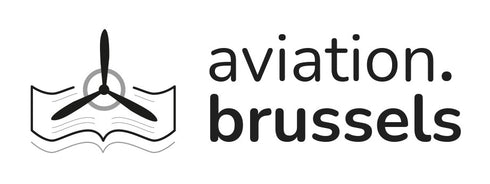Supermarine S.6B ( S1595 ) taking off ( Schneider Trophy, 1931 )
Prix régulier 100,00 € TTC 6%
Printed by The Guild of Aviation Artists for the 1996 Exhibition, this fine poster depicts the Supermarine S.6B ( S1595 ) taking off from Southampton Water, near Calshot Spit ( Schneider Trophy, 1931 ).
Caractéristiques
| Format | 59,3 x 42,1 cm |
| Auteur | Michael Turner |
| Editeur | The Guild of Aviation Artists |
| Année d’édition | 1996 |
Description
" The Aviation Paintings of the Year " is a major exhibition which takes place at the prestigious Mall Galleries in Central London, where over 400 works go on show. It is the largest exhibition of its kind in the world and admission is free.
This fine oil on canvas depicts a scene from the Schneider Trophy contest in 1931. It shows a three - quarter front view of the Supermarine S.6B ( S1595 ) gaining speed to take off from Southampton Water, near Calshot Spit ( England ), on September 13th. Piloted by Flight Lieutenant John Nelson Boothman ( 1901 - 1957 ), the S.6B had attained a recorded top speed of 340.08 mph ( 547.19 km / h ) and flown seven perfect laps of the triangular course over the Solent, the strait between the Isle of Wight and the British mainland. Other aircraft - such as the S.6B ( S1596 ) - and R.A.F. Calshot can be seen in the background.
The Coupe d'Aviation Maritime Jacques Schneider, commonly called the Schneider Trophy or Schneider Prize, was a trophy awarded annually ( and later, biennially ) to the winner of a race for seaplanes and flying boats.
Announced in 1912 by Jacques Schneider, a French financier, balloonist and aircraft enthusiast, the competition offered a prize of approximately £1,000. The race was held twelve times between 1913 and 1931. It was intended to encourage technical advances in civil aviation but became a contest for pure speed with laps over a ( usually ) triangular course ( initially 280 km, later 350 km ). The contests were staged as time trials, with aircraft setting off individually at pre - agreed times, usually 15 minutes apart.
The contests were very popular and some attracted crowds of over 200,000 spectators. If an aero club won three races in five years, they would retain the trophy and the winning pilot would receive 75,000 francs for each of the first three wins. Each race was hosted by the previous winning country. The races were supervised by the Fédération Aéronautique Internationale and the aero club in the hosting country. Each club could enter up to three competitors with an equal number of alternatives.
The race was significant in advancing aeroplane design, particularly in the fields of aerodynamics and engine design, and would show its results in the best fighters of the Second World War. The streamlined shape and the low drag, liquid - cooled engine pioneered by Schneider Trophy designs are obvious in the British Supermarine Spitfire, the American North American P - 51 Mustang and the Italian Macchi C.202 Folgore.
Between 1913 and 1931, The competition was won five times by the United Kingdom, three times by Italy, twice by the United States and once by France. The Schneider Trophy is now held at the Science Museum, South Kensington ( London, England ).
( source : Wikipedia )


